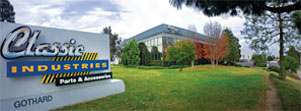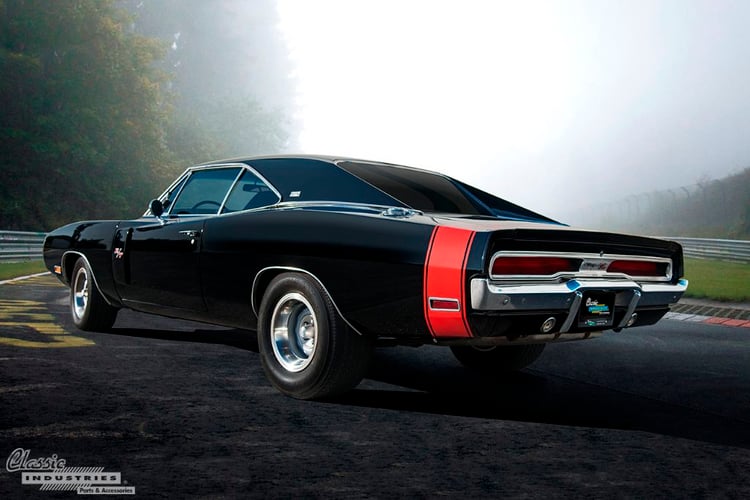
The Dodge Charger isn't just one of the most famous Mopar cars of all time, it's one of the most recognizable muscle cars ever built. Its sleek, aggressive styling and high-performance V8 engine choices gave the Charger instant presence on the road or the track. Even those who have little knowledge of classic cars will instantly recognize it from its appearances in movies such as Bullitt, Cannonball, and Dirty Mary Crazy Larry, as well as its prominent role on The Dukes of Hazzard. Today, we'll take a quick look back at Dodge Charger history and how this Mopar B-body muscle car changed from 1966 through 1974.
Dodge Charger History & Backstory
In the early-to-mid 1960s, Dodge was looking for a way to outshine the new sporty two-door vehicles that its competitors were developing, such as the Ford Mustang and Rambler/AMC Marlin. The company's sister brand Plymouth was also nearing completion of the Barracuda, which would become a legend in its own right.
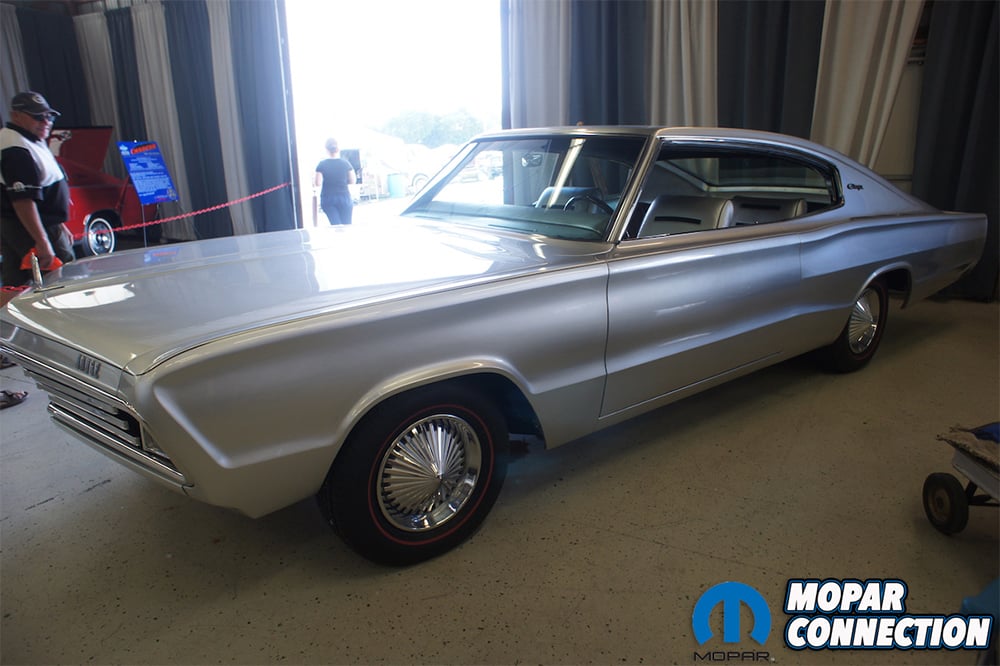
Above: 1965 Dodge Charger II concept car photo courtesy of Mopar Connection
Dodge engineers and designers put their heads together and developed a concept car called the Charger II, which debuted at auto shows in 1965. The "II" in its name was a nod to the original 1964 Dodge Hemi Charger concept car, which was based on a heavily-modified Polara. That first concept car was an extreme design, with chopped windows and no roof or bumpers, so it's not surprising it didn't become the basis for a production vehicle. However, the Charger II was much closer to a production-ready design, and the overwhelming positive response at auto shows led to the next step in Dodge Charger history: the new 1966 Charger was green-lit for full production.
1966-67 Dodge Charger
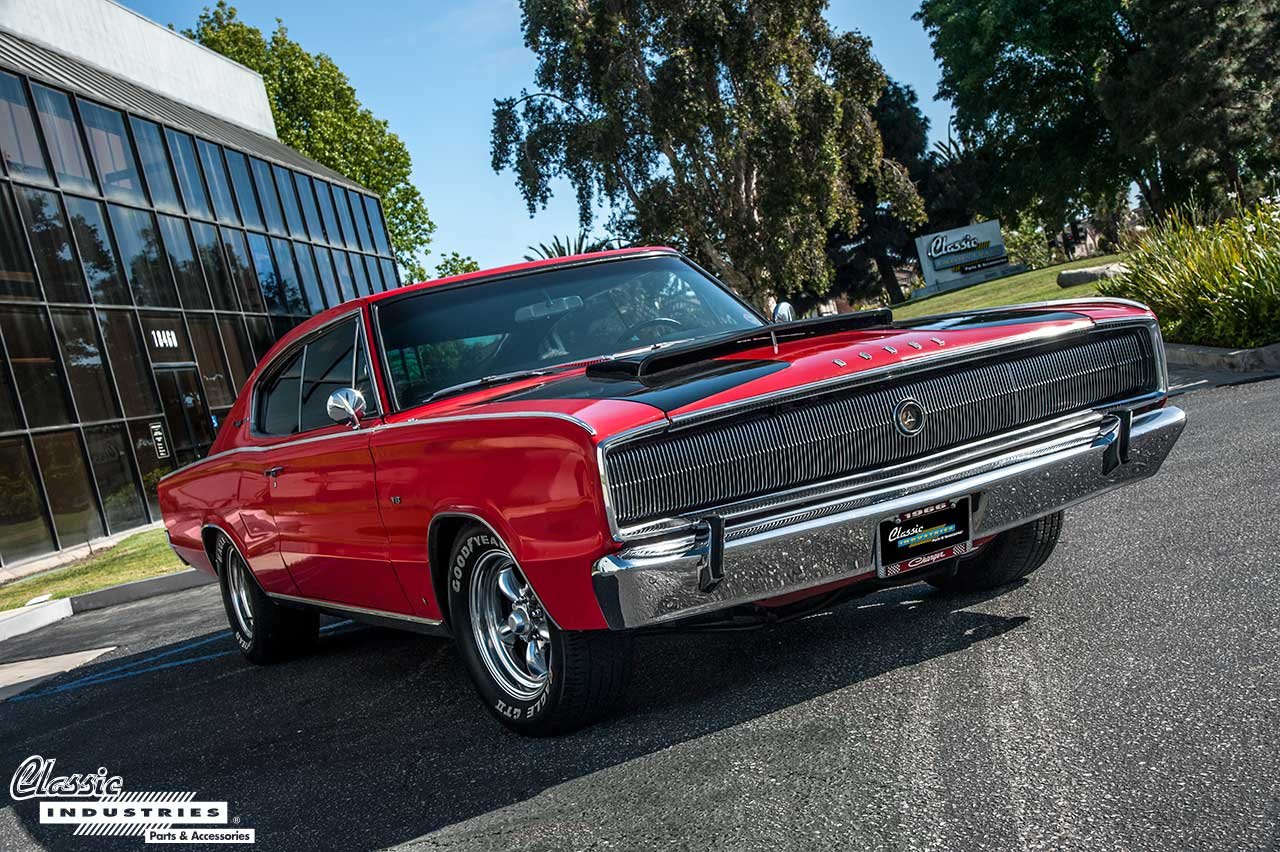
On Jan 1, 1966 America was introduced to “the Leader of the Dodge Rebellion”, the Charger, during the TV broadcast of the Rose Bowl. With the Charger, Dodge finally had the platform and the performance image to match the Hemi’s potent performance. Available exclusively as a 2-door hardtop, it could be equipped with a 318ci, 361ci, 383ci or 426ci Hemi engine.
The 1966 Charger had many unique features. Its “electric shaver” grill featured fully rotating headlights that made the grill look like one piece, a feature not seen on a Chrysler product since the 1942 DeSoto. Inside, the Charger used four individual bucket seats with a full length console from front to rear which extended to the back seats. The rear seats and console pad also folded forward and the trunk divider dropped back, allowing for lots of cargo room inside. Many other parts were also exclusive to the Charger such as the door panels, courtesy lamps and the instrument panel.
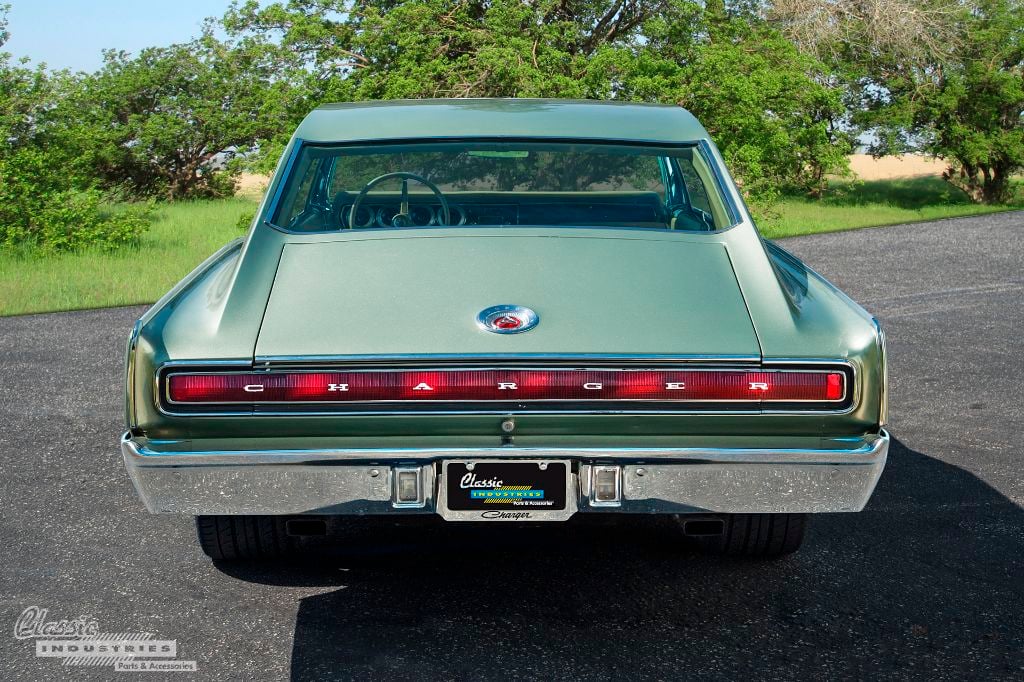
In 1967, the Dodge Charger remained mostly the same, with a few subtle changes. Turn signal lamps were added to the front fenders, and a vinyl roof was now offered as an option. On the interior, the center console was changed to a partial-length design. A 440ci "Magnum" V8 with 4-barrel carburetor was now available, producing 375 horsepower. This was the last year of the 1st Generation Charger.
1968 Dodge Charger
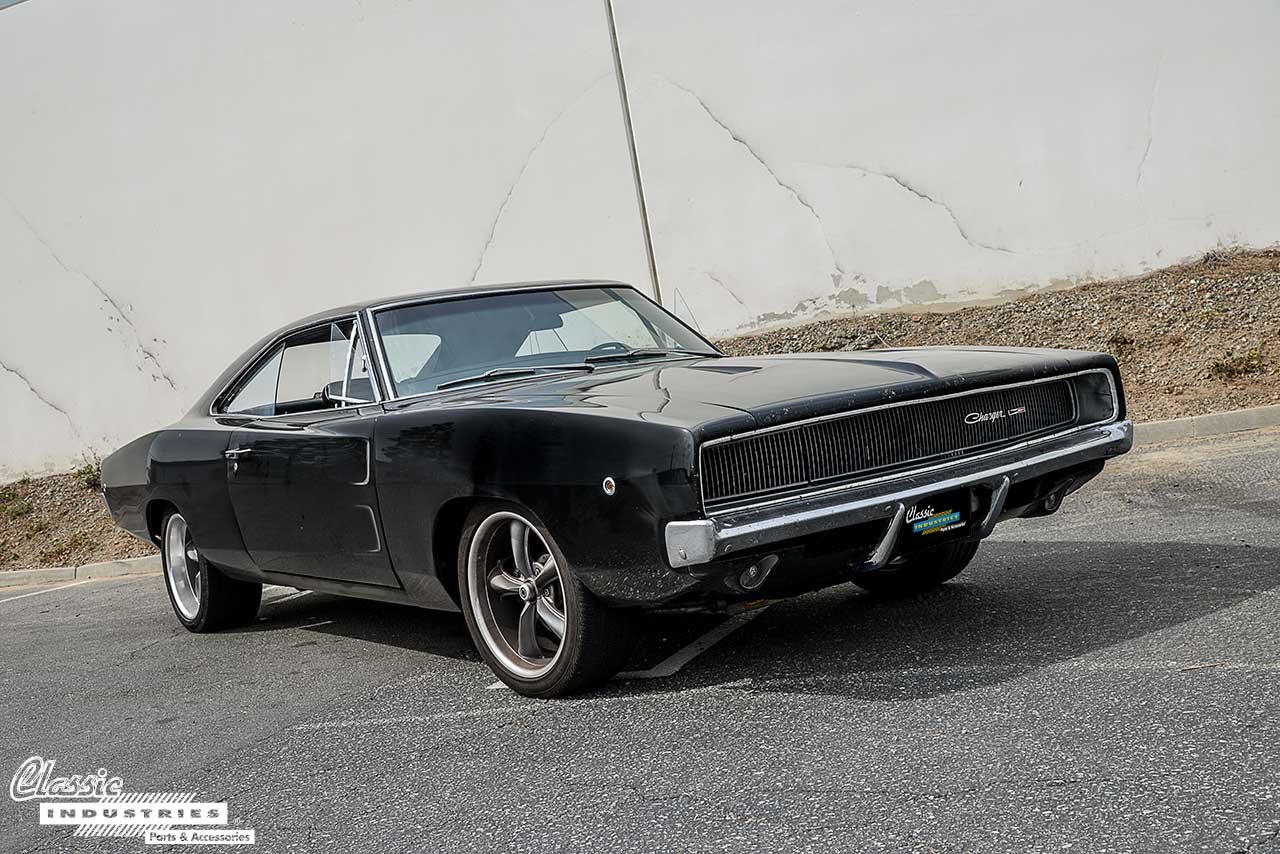
The '68 Charger was available as a 2-door hardtop only. Engines available were a 225ci Slant-Six (mid-year) or a 318ci, 383ci, 440ci Magnum or 426ci Hemi V8 engine.
Penned by designer Richard Sias, the 1968 Charger’s body was totally different from other vehicles at the time. Its profile was a double-diamond design that would come to be known as “coke bottle” styling. The rear end featured a “kick up” spoiler look, which was inspired by Group 7 racing vehicles. Dual circular tail lamps were added and dual scallops were added to the doors and hood to help accent the new body lines.
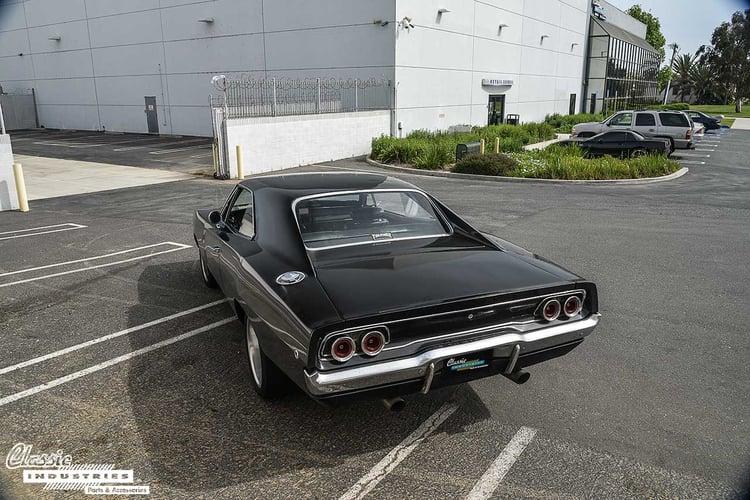
In order to further boost the Charger’s muscle car image, a new high-performance package was added, the R/T. This stood for “Road/Track” and would be the high performance badge that would establish Dodge’s performance image. The R/T came standard with the previous year’s 440 Magnum and the 426 Hemi was optional.
1969 Dodge Charger & Daytona
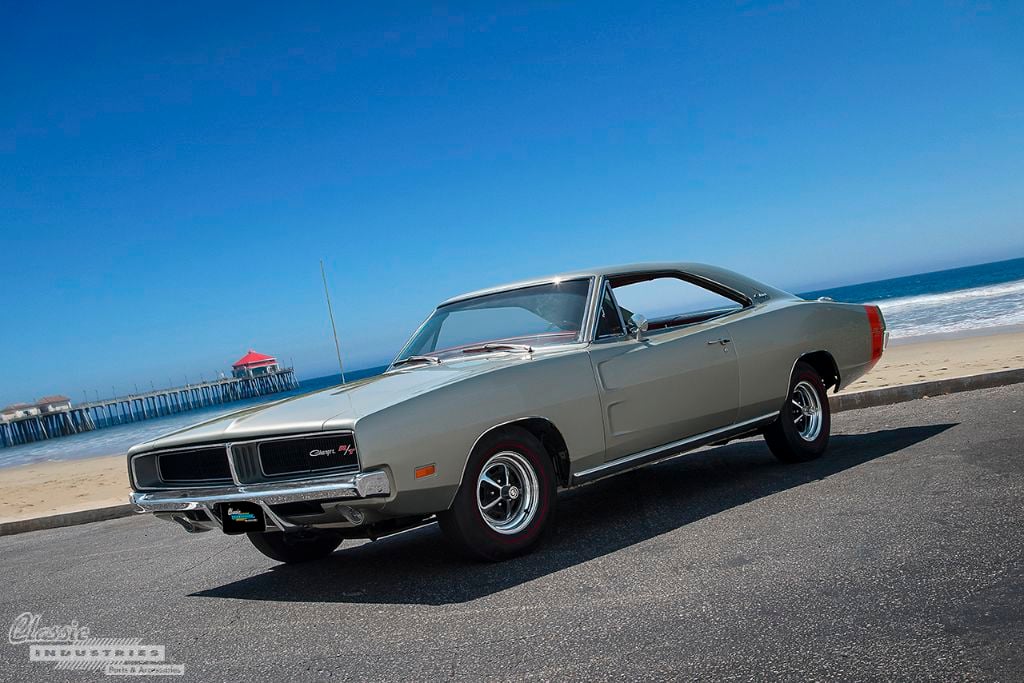
The '69 Charger was available as a 2-door Hardtop only. Engines available were 225ci Slant-Six, 318ci, 383ci, 440ci and 426ci Hemi V8.
The popular Charger changed subtly for 1969. Exterior changes included a new grill with a center divider and new longitudinal tail lamps and a new trim line called the Special Edition (SE) was added, along with two other models (the Charger 500, which featured a Coronet grill and flush rear window, and the Charger Daytona with its nose cone, giant wing and 200mph top speed, both for NASCAR racing).
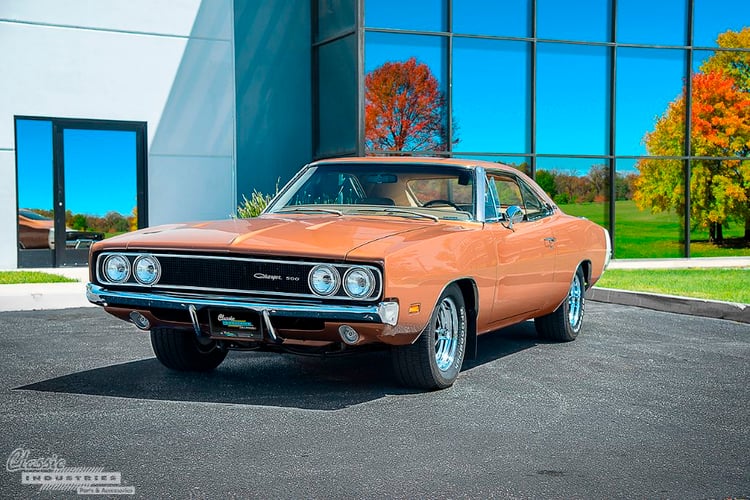
Above: The Charger 500 had a different grill and rear window design to improve high-speed aerodynamics.
The SE could be available by itself or packaged with the R/T, thus making an R/T-SE. The SE added leather inserts to the front seats only, chrome rocker moldings, a wood grain steering wheel and wood grain inserts on the instrument panel. A sunroof was added to the option list as well, and it would prove to be a very rare option (just 260 sold).
1969 Charger Daytona
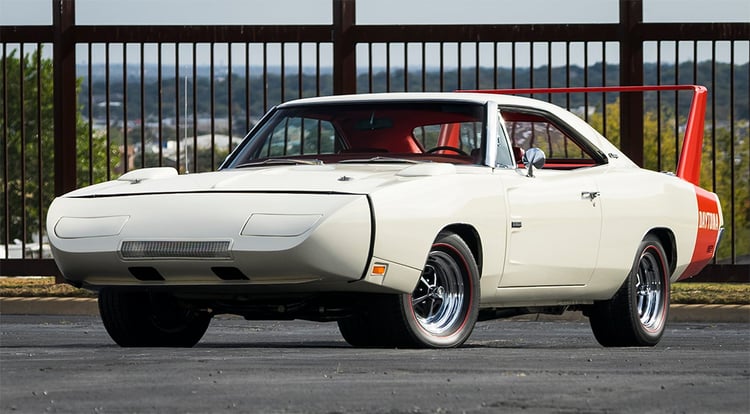
Above: 1969 Daytona image courtesy of Mecum Auctions
The 1969 Daytona represented a can-win attitude by Dodge in the muscle car heyday. Although the Charger’s beak and tall wing were extremely unusual for the time, Dodge still decided to build 500 in order to comply with NASCAR rules. And the Daytona performed. In fact, on the super-speedways, it was the first NASCAR racer to hit 200mph. The Daytona sold relatively well to the public as well, due to its radical styling and 440 Magnum or 426 Hemi performance. Other features included functional fender scoops, vacuum-powered headlights, and an enormous bumble-bee stripe that covered the three-foot wing.
1970 Dodge Charger
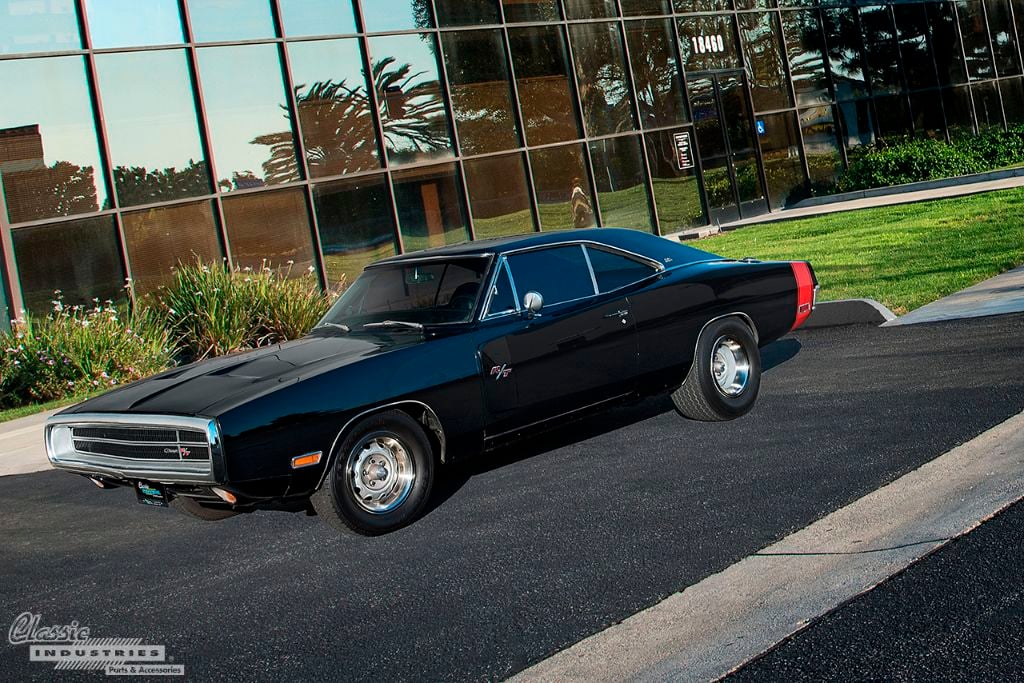
The '70 Charger was available as a 2-door Hardtop only. Engines available were 225ci Slant-Six, 318ci, 383ci, 440ci and 426ci Hemi V8.
The Charger saw a few more small changes for 1970. The front end now featured a large wraparound chrome bumper and the grill no longer had a divider. Electric headlight door motors replaced unreliable vacuum actuators and the side markers were now actual lamps instead of reflectors. The tail lamps were similar to 1969’s, but 500 and R/T models came with a new tail lamp panel. For R/T models, new rear-facing scoops with the R/T logo were mounted on the front doors, over the door scallops. This was the last year of the 2nd Generation Charger.
1971-74 Dodge Charger
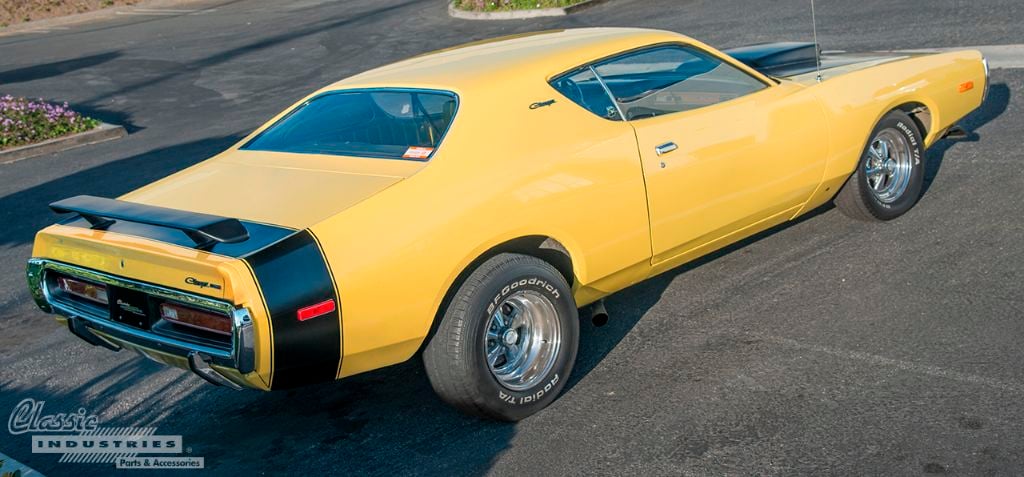
Engines available were 318ci, 340ci, 383ci, 440ci and 426ci Hemi V8. For 1971, the Charger was completely restyled with a new split grill and more rounded “fuselage” body styling. The interiors now looked more like those of the E-body and were now shared by the Plymouth B-body. The Charger’s trademark hideaway headlights were now optional rather than standard and a rear spoiler and a “Ram Charger” hood made the option lists for the first time.
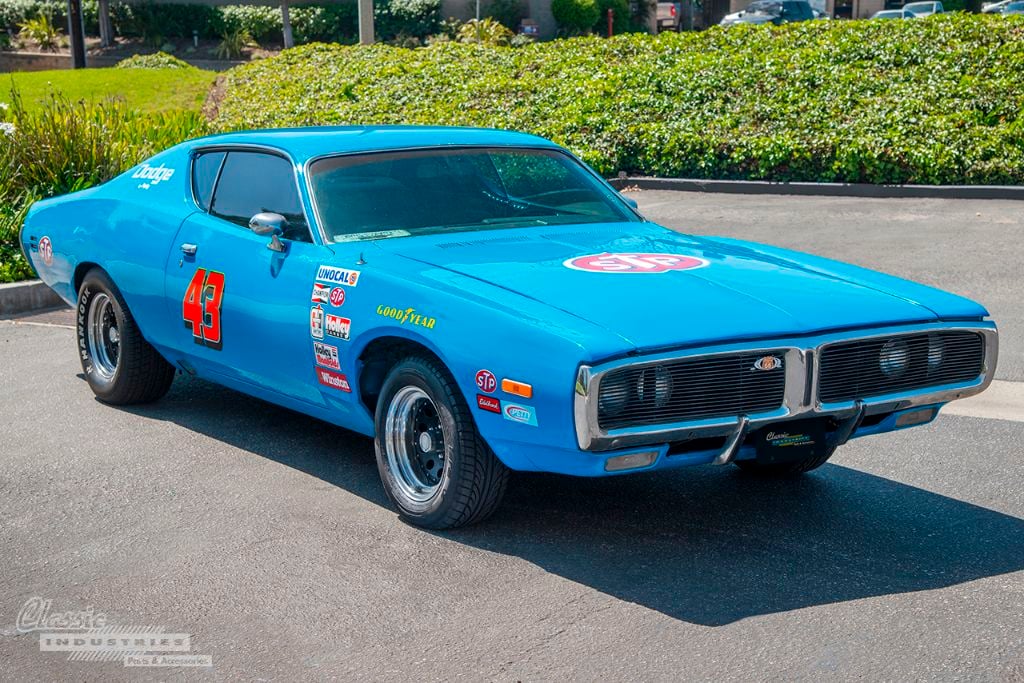
The Ram Charger added a special hood scoop that would pop up and draw fresh air directly into the carburetor through special duct work mounted to the underside of the hood. This same device also appeared on the Road Runner as the N96 option. For 1971 only, the Super Bee was applied to the Charger name and included Bumble Bee graphics and performance options.
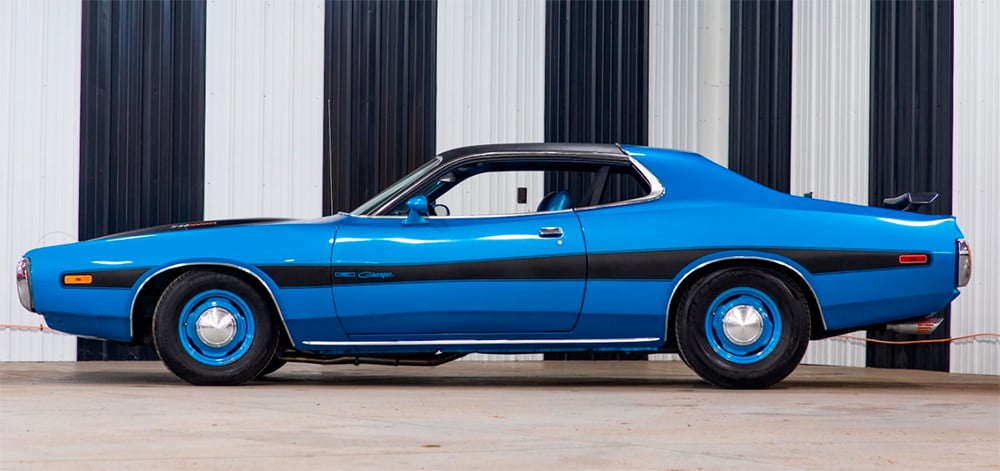
Above: 1973 Charger Rallye photo courtesy of Mecum Auctions. Note the new shape of the C-pillar and window opening.
In 1972, the R/T was replaced with a Rallye trim, and the Ram Charger option was discontinued. In 1973, the Charger's body received a slight redesign, becoming longer and wider. This change is most noticeable when observing the C-pillar and quarter glass shape. The taillights and grill were also redesigned, and hideaway headlamps were discontinued. For 1974, the final year of the 3rd Generation Charger, there were only a handful of changes such as exterior colors and interior panel grain pattern.
Looking for Dodge Charger Parts?
Now that you've learned a little more about Dodge Charger history, you may be looking to buy a classic 1966-74 Dodge Charger and restore it to original condition. If so, Classic Industries can certainly help you make your dream a reality. You can browse our Dodge Charger parts selection online, or click the button below to get a free full-color Dodge & Plymouth Mopar restoration parts catalog, which includes a variety of parts and accessories for the Charger.




